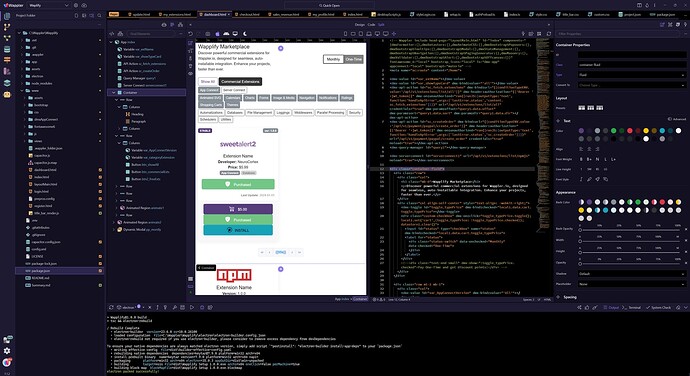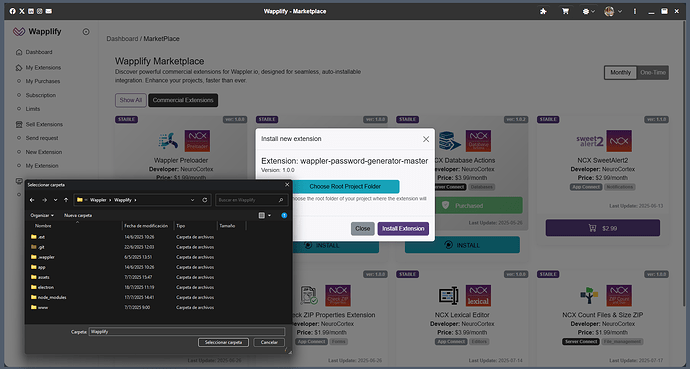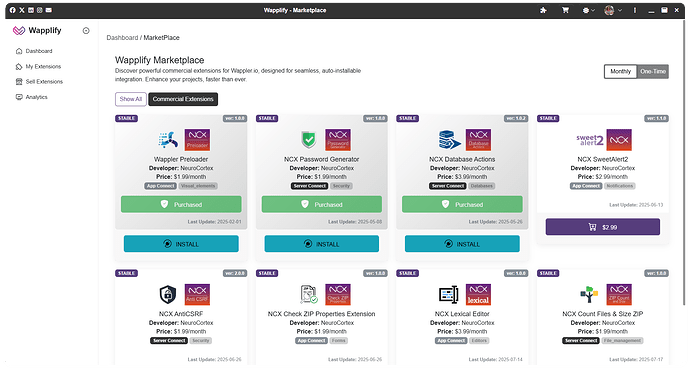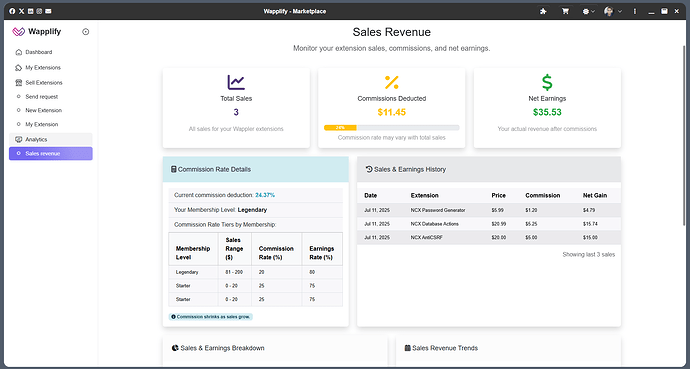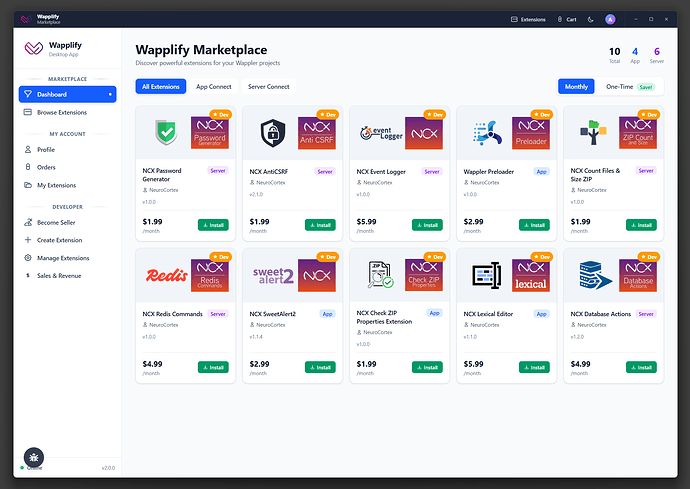Why Wapplify?
Developers – Monetize Your Talent
- Publish once, sell forever.
- Automated licensing & payouts.
- Zero manual install guides—our Desktop App handles the “Install” click.
- Centralized analytics.
- Community feedback & ratings – coming soon.
Creators & Agencies – Build Faster
- Hand‑picked, production‑ready extensions.
- One‑click installation straight into Wappler.
- Continuous updates & instant rollback.
- Skip weeks of coding; launch features today.
Wapplify Web & Desktop – 100 % Wappler‑Made
Our web app and desktop app are coded entirely in Wappler, showing Wapplify is a real, working product.
What Makes Us Different?
- Seamless Sync – Your purchases and sales sync automatically between the web dashboard and desktop app. Manage or buy from either place; installs happen in the desktop app—everything just works.
- Zero‑Friction Installs – Hit Install in the Desktop App and your extension is ready inside Wappler, no ZIPs, no terminal.
- Always Up‑to‑Date – Auto‑update notifications keep your stack bulletproof.
- Global Reach – Sell to the entire Wappler community.
- Quality by Devs: We believe in empowering developers with the freedom to manage their code, and the community helps us identify the most valuable tools. Nevertheless, Wapplify retains the right to delist or disable any extension found to be in breach of security protocols, licensing terms, or established coding standards.
Current Extension Line‑Up
| Event Logger | Track every action in your app. Self Service or Cloud option |
| Directus API | Point‑and‑shoot Directus integrations. |
| Custom Preloaders | Slick loading animations. |
| Custom Database Actions | Custom queries always paginated database with JSON support. |
| Password Generator | Secure passwords on the fly. |
| SweetAlert2 | Gorgeous alerts & modals. |
| Anti‑CSRF | Harden your forms instantly. |
| Redis Commands | Super‑fast cache & queues. |
| Novu Headless | Multi‑channel notifications. |
| MongoDB | NoSQL power, zero pain. |
| GitHub Private Repo | Pull private code securely. |
| Check ZIP Properties | Validate uploads. |
| ZIP Folder Tree View | Explore archives visually. |
| ZIP Count and Size | Instant ZIP stats. |
| Lexical Editor | Text-editor based on Lexical framework by Meta |
| Shiftly | Visual business-hours & shift-planner that drops straight into any form |
Calling All Extension Developers
Earn Recurring Revenue – Set your own prices and reach a global audience.
Disclaimer
Wapplify Marketplace is an independent, commercial platform. It is not affiliated with, endorsed, or sponsored by Wappler (Dynamic Zones International B.V.) or any of its subsidiaries.“Wappler” is a trademark of Dynamic Zones International B.V.“Wapplify Marketplace” is a commercial brand owned by NeuroCortex.ec.All other trademarks belong to their respective owners.
Wapplify Web and Desktop made 100% in Wappler
Beta Starts Soon
Mark your calendar: 20 July 2025 – 12:00 UTC. That’s when I open the doors for beta accounts. Jump in early and be one of the first to test-drive Wapplify.
www.wapplify.cloud
Stop reinventing the wheel. Start Wapplifying your workflow!

